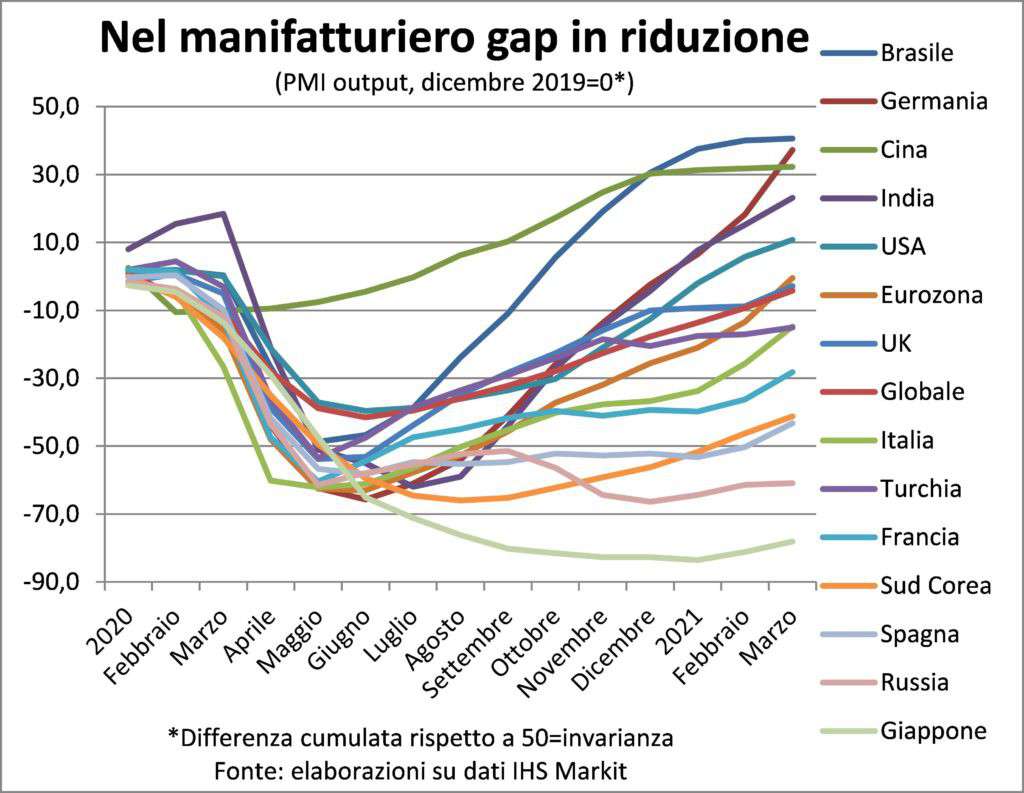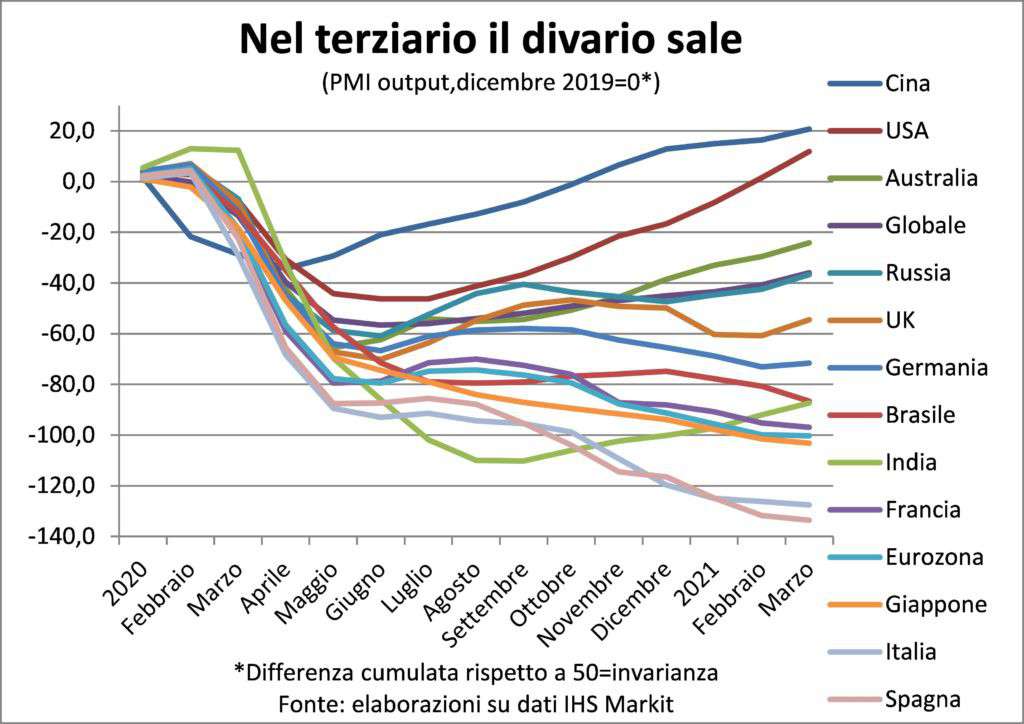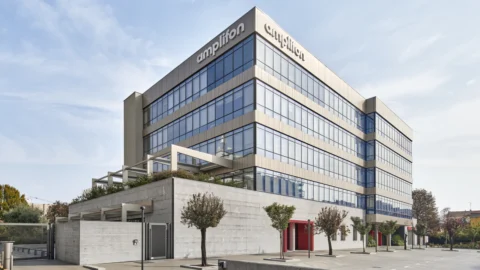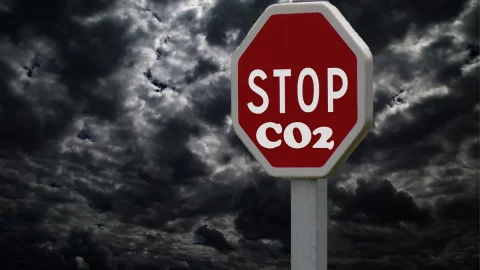When you have hit rock bottom you can start going up. Or to dig.
In the current transition stage towards post-pandemic normalization, the double possibility, of going back up or continuing to go down, acts as a gauge to measure the health of sectors and economies. And of the latter also according to the weight that the various sectors have in the national income statement.
For example, if manufacturing has a bigger impact, the economy as a whole will perform better, as industrial transformation is rocketing everywhere (almost). If the is an important driving force, then overall growth is inevitably penalized, and will remain so for a long time, because international travel will be the last carriage to hook up the train of recovery, for fear of importing other variants of the virus.
Then there is manufacturing and manufacturing. It's okay there machinery production, less well that of cars, decidedly bad clothing chain. And therefore the country that has more of the first than the third recovers faster, like the one that, in the automotive sector, is converting more rapidly to the electric motor.
All of this happens for the triple reason that: the pandemic has produced a anomalous recession, as already highlighted a year ago Lancet, much more intense in the tertiary sector, which is usually less cyclical; they were in progress structural transformations (towards digital and sustainability, not just environmental) which have been accelerated; the health and support responses to households and businesses were very different from country to country in size (although identical in orientation).
Thus, the entire world economy is already in full recovery, which began in the third quarter of last year. And that is set to accelerate as and when vaccinations will allow reopening of activities and which will unfold programs and financial aid (including the infrastructure plan in the USA and the NgEU in Europe). Thus realizing the prospects outlined in the title of the Lancet of January ("2021, the odyssey of the economy towards the happy ending").
From the summer onwards there is a high probability that the whole world and its individual parts (including Italy) will advance boom step. This is also the opinion of one of the most important and famous and best paid international bankers, viz Jamie Dimon ($31 million in 2020, wealth valued at $1,8 billion), CEO of JPMorgan Chase & Co, the largest bank in the world by capitalization ($477 billion).
Dimon, with the inevitable smile that instills security and confidence, and also reveals great acumen, believes that the US is entering turbo expansion, thanks to the accumulated savings, further stimulus measures, public deficit spending, new purchases of securities by the Fed, the infrastructure plan, mass vaccination and the euphoria for the end of the pandemic. You don't have to be on his high monetary peaks to see the horizon as he sees it.
Furthermore, on closer inspection, in the eyes of economic cycle enthusiasts, it cannot escape the fact that the recovery phase properly so-called, which is the one during which what was lost during the recession is "recovered", ended in the past quarter, while in the present one expansion beginsi.e. the further increase in production and employment beyond the peaks reached in the past.
But this is not the case for all economic actors. Indeed, this recovery is unequal, at least as unequal as the recession was, or rather the tsunami caused by the first lockdown, to which were added the blows inflicted by the subsequent closures, or non-reopenings.
Unequal for individuals and families. Those who were able to continue working kept their full salary and saved up with it smart working, expenses for food (lunches away from home), accommodation (rental of working domiciles, when these are far from the residence) and transport (from home to work and vice versa).
In addition to forced saving from the lack of consumption in travel, cars, cinemas and theatres. NB: those who spend the most on such consumption are located in the middle-upper and upper part of the income pyramid; that is, it rained in the wet (in Venetian dialect the expression is more colorful and amusing).
These people will have greater purchasing power and confidence to spend as soon as possible
The recovery, like the recession, is unequal even among firms. Obviously, depending on the sectors to which they belong. Not only because they are more or less affected by the restrictions on social activities, but also whether or not it is possible to organize the activity remotely (a building, like a car, cannot currently be built with the power of the mind alone). And of capitalization, which made it possible to cope more or less well with the losses. And of the aid received.
It must be reiterated that aid has sustained profitability of most companies. As well as the budgets of most families. And that the plentiful and almost zero-cost credit it filled the gaps in turnover and made it possible to cover fixed costs. Therefore it is good that the recovery from such aid and such easy financial conditions is gradual and goes hand in hand with the increase in economic activity.
The recovery is unequal across countriesas mentioned and explained above. This appears quite evident if you compare the series of output component of the PMIdivided by sector. There are, however, two ways to do this. The first is the traditional one, and is limited to recording the PMI month by month. Bearing in mind that above 50 there is an increase in activity and below 50 there is a reduction. So an increase in the indicator does, in any case, indicate an improvement in the trend. But a PMI that rises while remaining below 50 is one thing: it means that the contraction in activity persists, albeit less intense; another account is a PMI that rises above 50: it means that there is an acceleration of expansion.
As for manufacturing, in March the increase was almost everywhere from above 50. For some countries the level reached is a record. For the tertiary sector, on the other hand, there is not always an increase in March and very often it is, however, being below 50.
Therefore, if on the one hand it is understandable to consider these data as positive, because they signify progress along the road to recovering normality (whatever form this may take after the pandemic), on the other hand it is not considered that in some cases this progress takes on the appearance of an additional back off to better blow up (back to – hopefully – better jump, sic!).
To better understand the recent variations of these indices, the second method is used, i.e. to accumulate the monthly differences with respect to 50 starting from December 2019. This accumulation only rises if it is above 50, it decreases if it is below, even if the index has increased (for example: if it is 48 in a month, -2 is added to the sum). What emerges is a more truthful picture of the economic suffering of various countries and sectors.
In manufacturing we observe a reduction of the gap between those who are already beyond the pre-pandemic level (in order: Brazil, Germany, China, India and the USA) and those who are still far from that level (from the bottom: Japan, Russia, Spain, South Korea and France). A sign that the latter are now advancing at a faster pace than the former (with the exception of Germany, which runs faster than all).
In the tertiary sector, however, the gap is widening further, between those who are ahead and above the activity existing before the arrival of Covid-19 (China and USA) and those who are behind and further retreat (Spain, Italy, Japan, Eurozone and France).


It is, of course, one impressionistic representation. Because the PMIs are qualitative (they say if there is an increase or decrease and their diffusion), and not quantitative. Because they are less representative of official statistics. But like a Van Gogh painting, they provide a vision that even the most precise of photographs cannot reveal.
Why these differences? For three reasons: restrictions, vaccinations and protections, the latter in the form of budgetary and monetary support. The USA has been less rigid but also less wavering in the restrictions, and more decisive and courageous in aid and now rapid in vaccines. China has been very strict and consistent in its closures and generous in its aid. The Eurozone wavers in closures, far-sighted but not quick and generous in aid and slow in vaccines.
To get out of this tragedy, social and human rather than economic, sooner and less battered, there are only three things left to do: vaccinate, vaccinate and vaccinate. And meanwhile compensate for losses of private budgets. Taking into account inequalities.
Once again, one common European strategy not only would it be useful, but it is also necessary. In order not to widen the differences which would turn out to be a boomerang for maintaining the Union.





